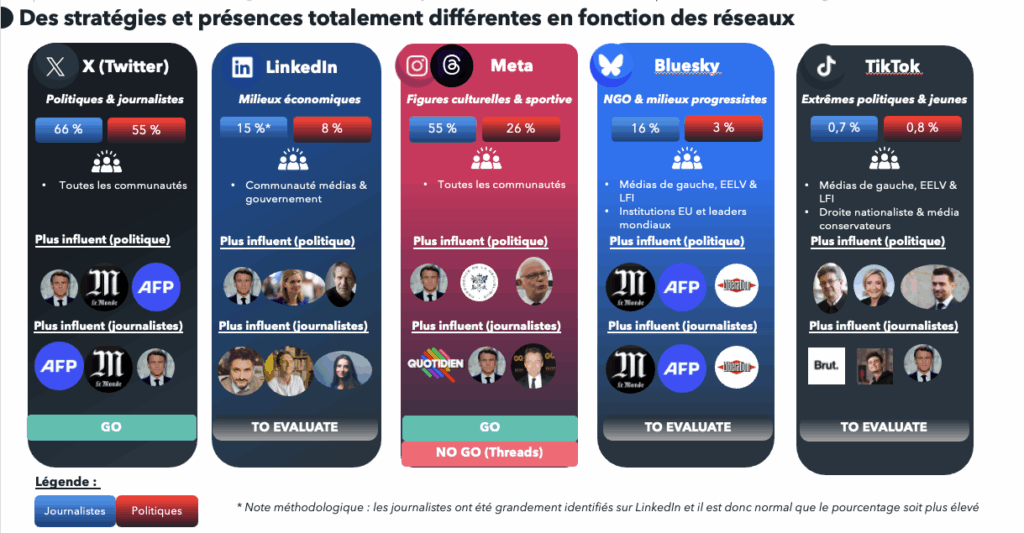Sommaire
Can you really capture the attention of journalists and politicians on LinkedIn?
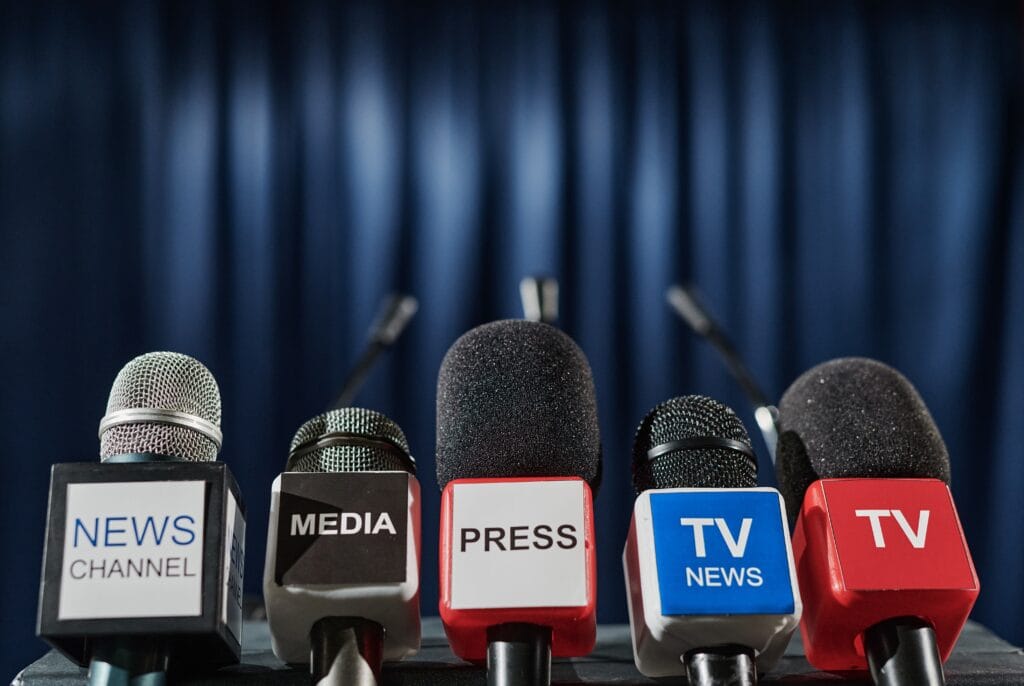
The 5 take-aways from our study:
Adopt a precise or highly targeted approach for your decision-makers: we observe how much each network can fluctuate and change, as is the case for communities.
The challenge will be to ensure a multi-presence on key networks: the extremes dominate TikTok, the majority is on LinkedIn, the left on Bluesky, while Instagram and X remain essential for politicians.
Find the right intermediaries: for each type of stakeholder, influence relays also vary depending on the communities.
Companies and lobbies are absent: beyond the top 600 spots for the first lobbies & companies (including Netflix France), for journalists (234th with TF1 for politics), the first CEO only appears at 1,337th place! (and 1,572nd for politicians).
Nothing is lost, nothing is created, everything is transformed: the study’s results confirm facts well-known to professionals. The challenge will be to see how these constants evolve at the margins on a few key items.
In this study, we focus on politicians and journalists:
What do they follow across all social media? What do they “like” on LinkedIn?
What are their practices on social media?
Who stands out in attracting these actors?
How can they be better attracted?

The full presentation is available on Youtube.
The Ecosystems
Here are the two influence ecosystems with tens of thousands of people to influence:
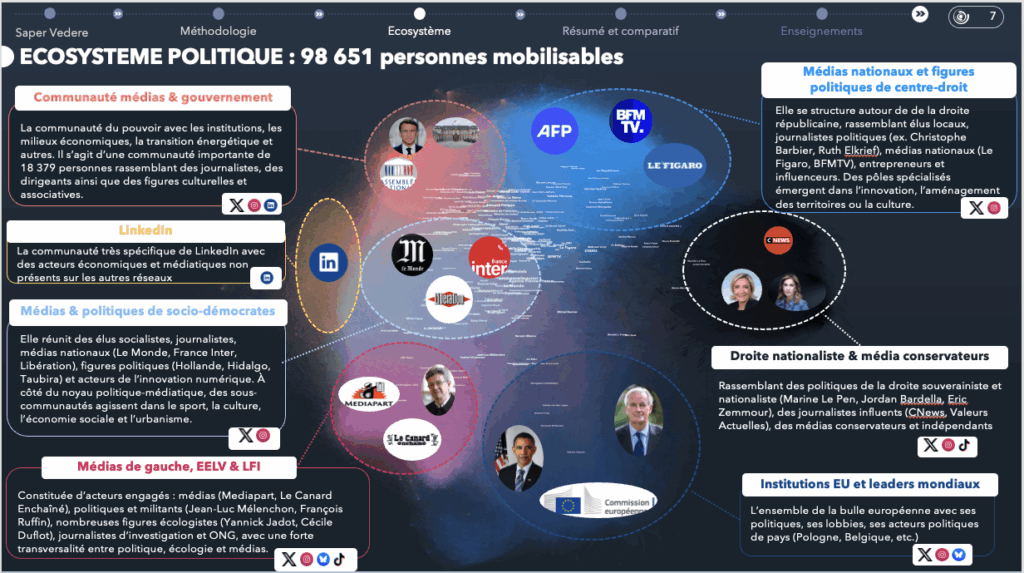
Media & Government Community: The power community, including institutions, economic circles, energy transition stakeholders, and more. It is a large community of 18,379 people bringing together journalists, leaders, as well as cultural and associative figures.
Media & Socio-Democratic Politics: Bringing together socialist politicians, journalists, national media (Le Monde, France Inter, Libération), political figures (Hollande, Hidalgo, Taubira), and digital innovation actors. Alongside the political-media core, sub-communities are active in sports, culture, social economy, and urban planning.
Left-wing Media, EELV & LFI: Composed of committed actors: media (Mediapart, Le Canard Enchaîné), politicians and activists (Jean-Luc Mélenchon, François Ruffin), many environmental figures (Yannick Jadot, Cécile Duflot), investigative journalists and NGOs, with strong crossovers between politics, ecology, and media.
National Media and Center-Right Political Figures: Structured around the Republican right, bringing together local officials, political journalists (e.g., Christophe Barbier, Ruth Elkrief), national media (Le Figaro, BFMTV), entrepreneurs, and influencers. Specialized clusters emerge around innovation, territorial planning, and culture.
Nationalist Right & Conservative Media: Gathering sovereignist and nationalist right-wing politicians (Marine Le Pen, Jordan Bardella, Eric Zemmour), influential journalists (CNews, Valeurs Actuelles), conservative and independent media.
EU Institutions and Global Leaders: The European bubble with its politicians, lobbies, and political actors from countries such as Poland, Belgium, etc.
LinkedIn: The very specific LinkedIn community, with economic and media players absent from other networks.
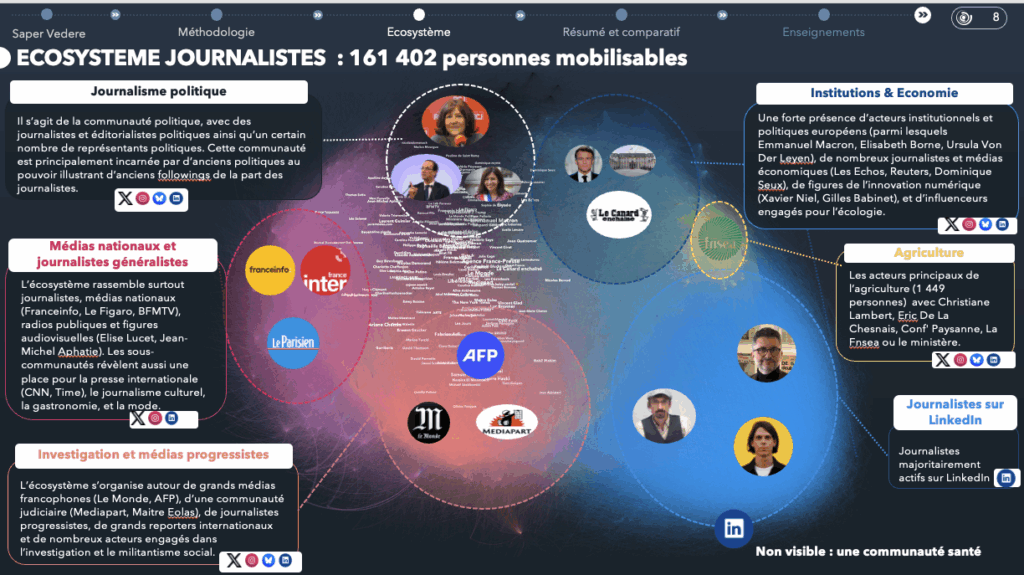
Political Journalism: The political community, with political journalists and columnists as well as a number of political representatives. This community is mainly embodied by former politicians, illustrating journalists’ past followings.
Institutions & Economy: Strong presence of European institutional and political actors (including Emmanuel Macron, Elisabeth Borne, Ursula Von Der Leyen), numerous economic journalists and media (Les Echos, Reuters, Dominique Seux), digital innovation figures (Xavier Niel, Gilles Babinet), and ecology-driven influencers.
National Media and Generalist Journalists: This ecosystem mainly gathers journalists, national media (Franceinfo, Le Figaro, BFMTV), public radio stations, and audiovisual figures (Elise Lucet, Jean-Michel Aphatie). Sub-communities also highlight a role for international press (CNN, Time), cultural journalism, gastronomy, and fashion.
Investigative and Progressive Media: Organized around major French-speaking media (Le Monde, AFP), a legal community (Mediapart, Maître Eolas), progressive journalists, international reporters, and many actors engaged in investigation and social activism.
Agriculture: The main players in agriculture (1,449 people), including Christiane Lambert, Eric De La Chesnais, Conf’ Paysanne, La Fnsea, or the Ministry.
Journalists on LinkedIn: Journalists mainly active on LinkedIn.
Comparison Between the Two Ecosystems

There are ultimately very few common actors (23% of those that matter to journalists and 38% of those that matter to politicians).
The actors absent from the political side are essentially journalists active on LinkedIn. For those absent from the journalistic side, they are quite specific lobbies or highly regional accounts (Les Patriotes Meuse, Jeunes_insoumis_Perpignan, etc.).
In terms of media, journalists follow more investigative and left-wing outlets compared to politicians.
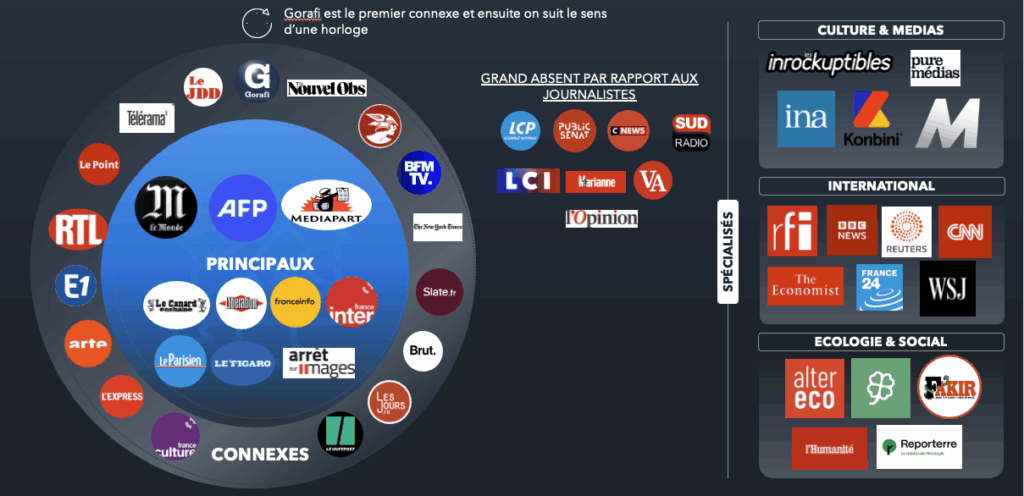
Politicians :
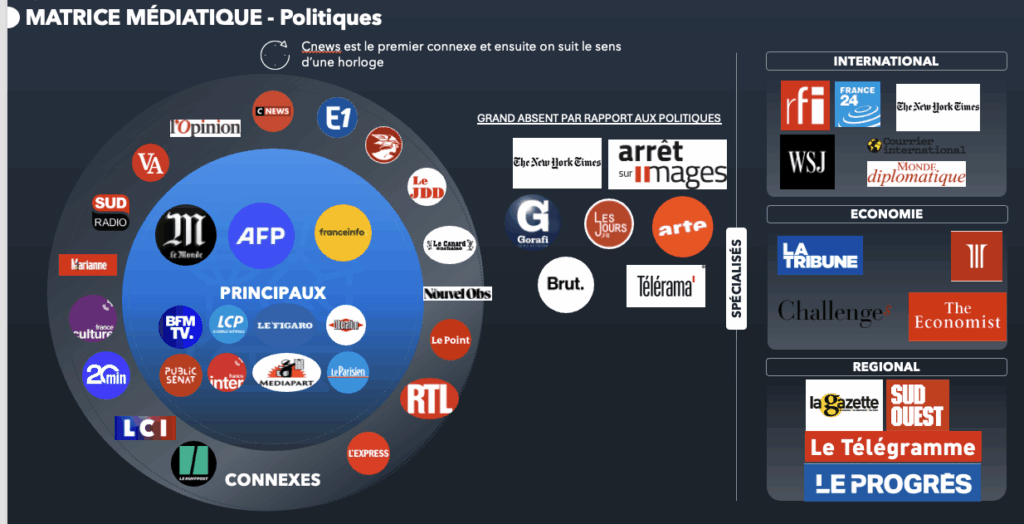
Politically, they are quite similar.:
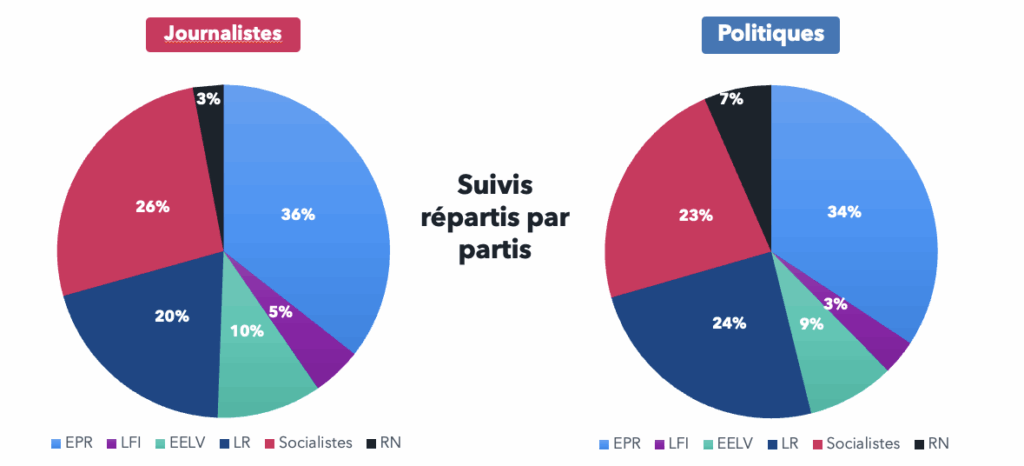
Regionally, journalists show a strong Parisian focus, while politicians lean towards regions (right in PACA, left in Aquitaine, RN and others in the North).
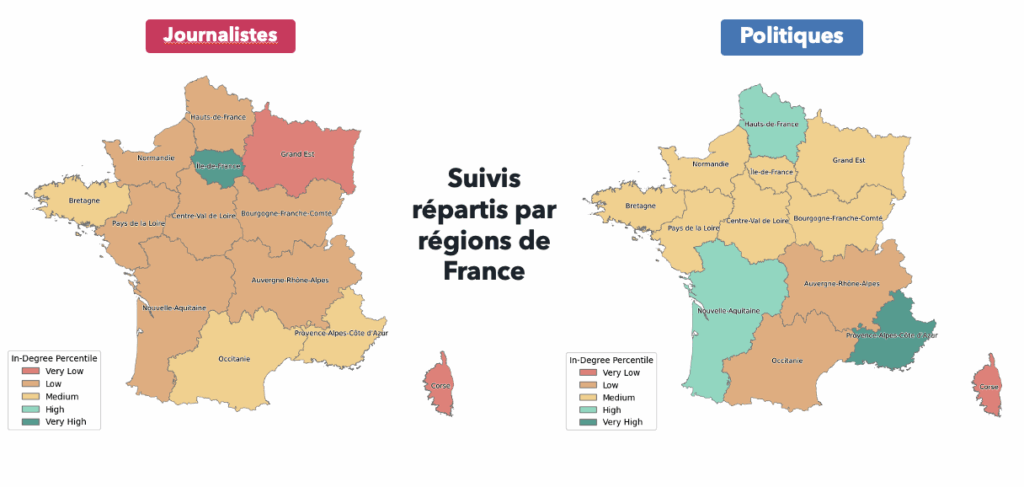
On lobbies, the same tendency as with media: journalists lean slightly more to the left:
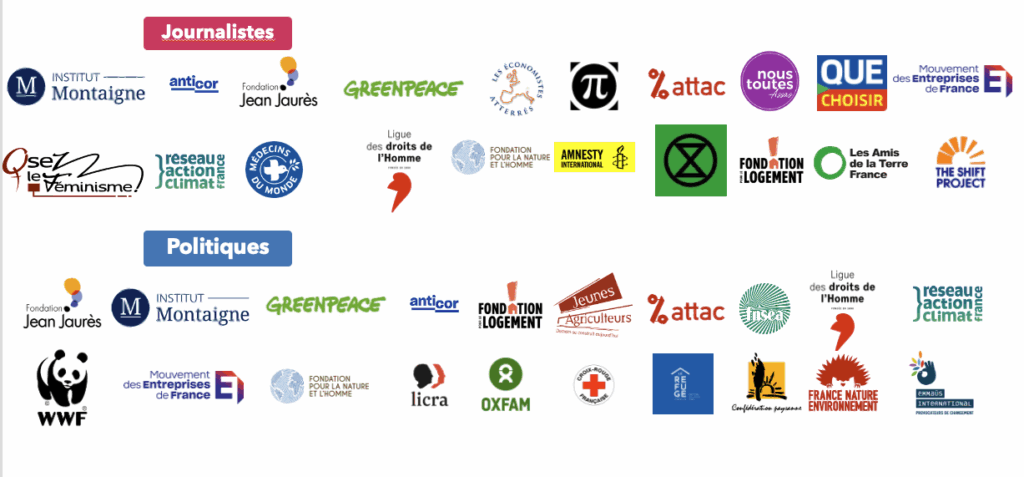
For politicians, here is their distribution:
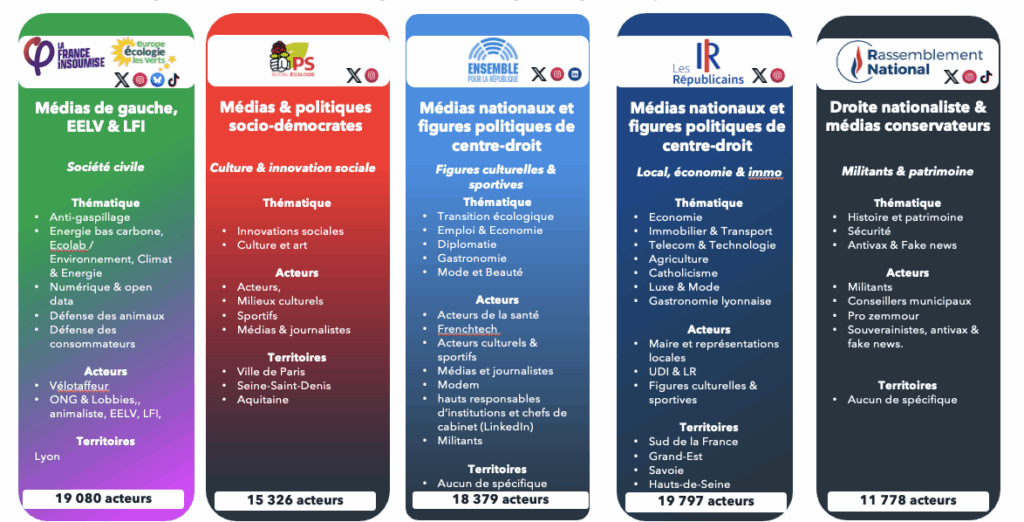
Whereas the journalist stereotype is shown here:
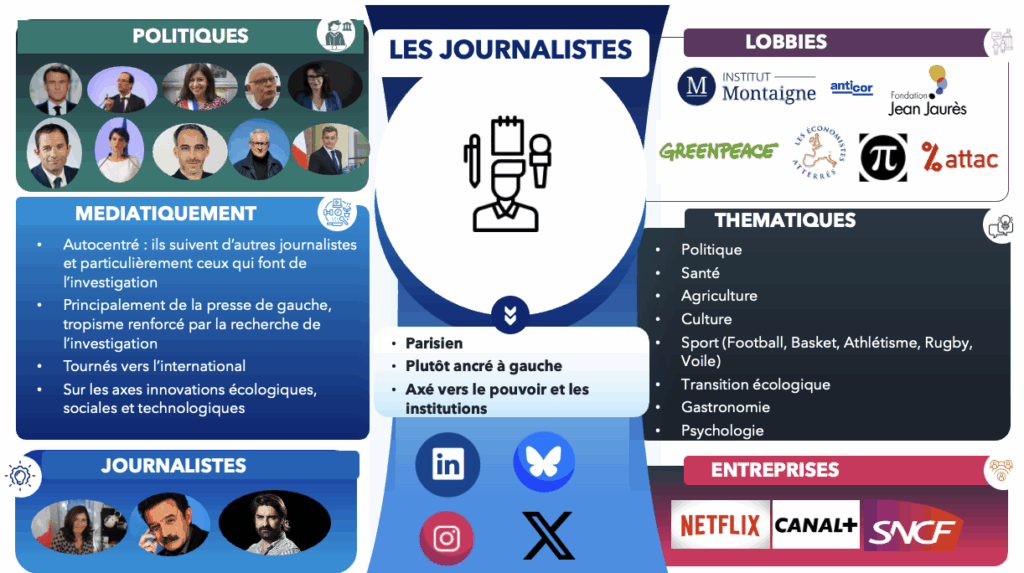
In the end, we end up with rather disparate social networks:
